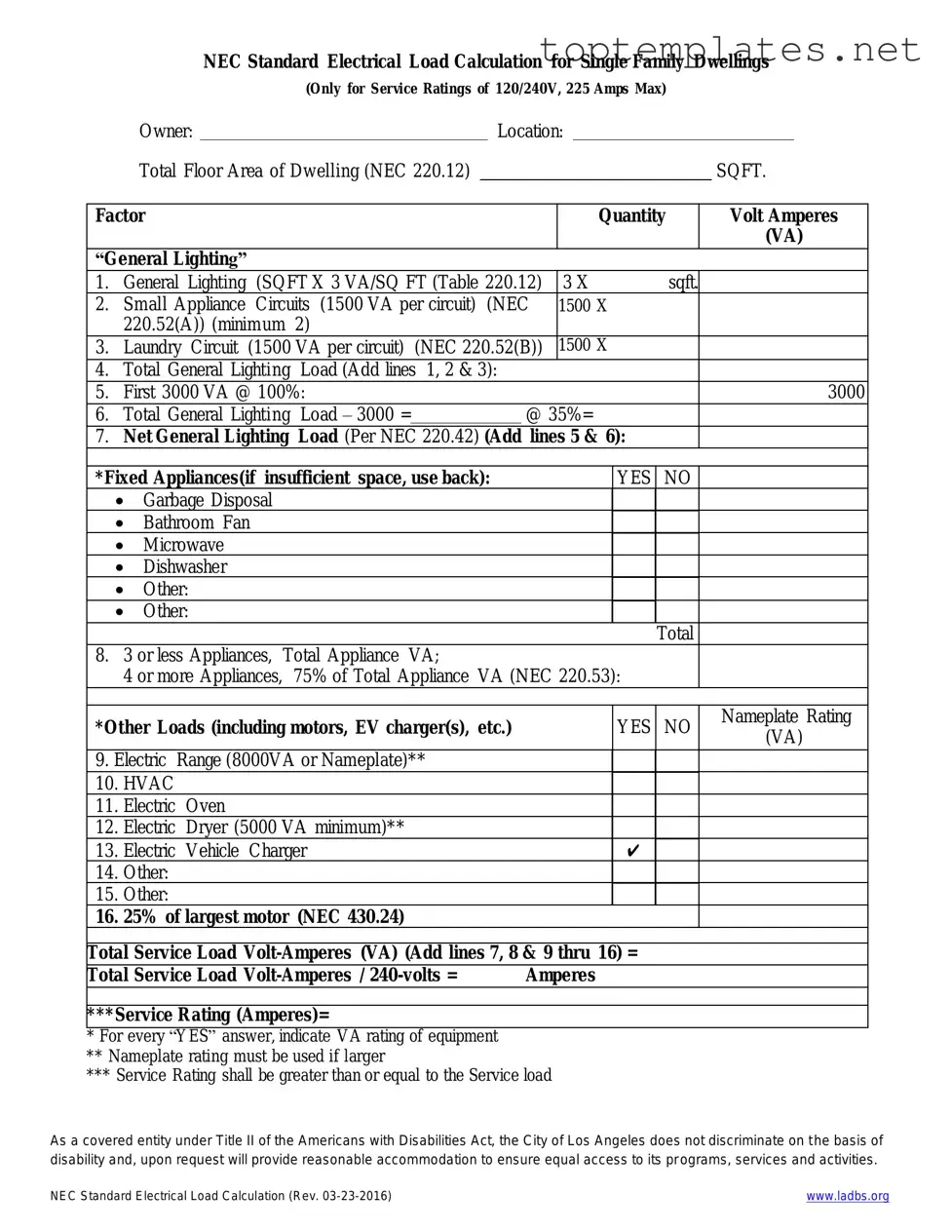What is the LADBS NEC Standard Electrical Load Calculation form?
The LADBS NEC Standard Electrical Load Calculation form is a document used in Los Angeles, designed to help electricians, contractors, and engineers calculate the electrical load of a building or project. This calculation is crucial for ensuring that the electrical system is appropriately sized to handle the expected electrical demand safely and efficiently, in accordance with the National Electrical Code (NEC) standards.
Why is it important to comply with the NEC when completing this form?
Compliance with the National Electrical Code (NEC) is essential when completing the LADBS NEC Standard Electrical Load Calculation form because the NEC sets the foundation for electrical safety in residential, commercial, and industrial settings. Adhering to its standards helps prevent electrical fires, shock, and other hazards by ensuring that electrical systems are designed and installed to handle anticipated loads safely.
Who is required to fill out the LADBS NEC Standard Electrical Load Calculation form?
This form is typically required to be filled out by licensed electricians, contractors, or engineers who are responsible for designing or installing electrical systems in new constructions, renovations, or upgrades within the jurisdiction of the Los Angeles Department of Building and Safety. It's a crucial step in obtaining the necessary permits for electrical work.
How do I determine the electrical load of a project?
Determining the electrical load of a project involves calculating the total power requirements of all electrical appliances, systems, and components that will be used in the building. This includes lighting, heating, cooling, appliances, and any specialized equipment. The LADBS NEC Standard Electrical Load Calculation form provides a systematic way to compile and calculate these loads, ensuring that all aspects of the electrical demand are considered.
Can this form be submitted electronically?
Yes, in most cases, the LADBS NEC Standard Electrical Load Calculation form can be submitted electronically through the Los Angeles Department of Building and Safety's online portal. This digital submission process simplifies the submission and review process, making it faster and more efficient for both applicants and the department's staff.
What happens if my form shows that the current electrical system is inadequate?
If the calculation results from the form indicate that the current electrical system is inadequate to meet the calculated load, it will be necessary to upgrade the electrical system. This may include replacing or upgrading panels, wires, and other components to ensure the system meets the NEC standards for the increased load. It’s important to address these inadequacies to avoid potential safety hazards and ensure compliance with local and national electrical codes.
Is there a fee to submit the LADBS NEC Standard Electrical Load Calculation form?
There may be a fee associated with the submission of the LADBS NEC Standard Electrical Load Calculation form, especially as part of the application process for electrical permits. The specific fee can vary depending on the scope of the project and the type of permits required. For the most accurate and up-to-date fee schedule, it's recommended to consult directly with the Los Angeles Department of Building and Safety.
Where can I find help or resources if I have questions about filling out the form?
If you have questions about filling out the LADBS NEC Standard Electrical Load Calculation form, there are several resources available. The Los Angeles Department of Building and Safety offers guidelines and instructional materials on their website. Additionally, professional associations and organizations related to the electrical industry can provide guidance, and consulting a licensed electrician or electrical engineer is always a wise decision to ensure accuracy and compliance.

